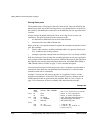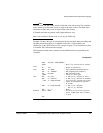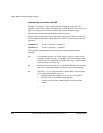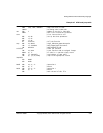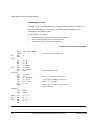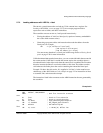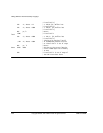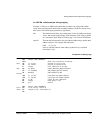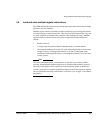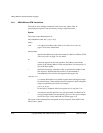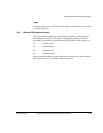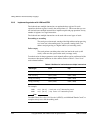
Writing ARM and Thumb Assembly Language
ARM DUI 0068B Copyright © 2000, 2001 ARM Limited. All rights reserved. 2-35
2.7.2 Loading addresses with LDR Rd, = label
The
LDR Rd,=
pseudo-instruction can load any 32-bit constant into a register. See
Loading with LDR Rd, =const on page 2-27. It also accepts program-relative
expressions such as labels, and labels with offsets.
The assembler converts an
LDR r0,=label
pseudo-instruction by:
• Placing the address of
label
in a literal pool (a portion of memory embedded in
the code to hold constant values).
• Generating a program-relative
LDR
instruction that reads the address from the
literal pool, for example:
LDR rn [pc, #offset to literal pool]
; load register n with one word
; from the address [pc + offset]
You must ensure that there is a literal pool within range. Refer to Placing literal
pools on page 2-28 for more information.
Unlike the
ADR
and
ADRL
pseudo-instructions, you can use
LDR
with labels that are outside
the current section. If the label is outside the current section, the assembler places a
relocation directive in the object code when the source file is assembled. The relocation
directive instructs the linker to resolve the address at link time. The address remains
valid wherever the linker places the section containing the
LDR
and the literal pool.
Example 2-9 shows how this works. It is supplied as
ldrlabel.s
in the
examples\asm
subdirectory of the ADS. Refer to Code examples on page 2-2 for instructions on how
to assemble, link, and execute the example.
The instructions listed in the comments are the ARM instructions that are generated by
the assembler.
Example 2-9
AREA LDRlabel, CODE,READONLY
ENTRY ; Mark first instruction to execute
start
BL func1 ; Branch to first subroutine
BL func2 ; Branch to second subroutine
stop MOV r0, #0x18 ; angel_SWIreason_ReportException
LDR r1, =0x20026 ; ADP_Stopped_ApplicationExit
SWI 0x123456 ; ARM semihosting SWI
func1
LDR r0, =start ; => LDR R0,[PC, #offset into




